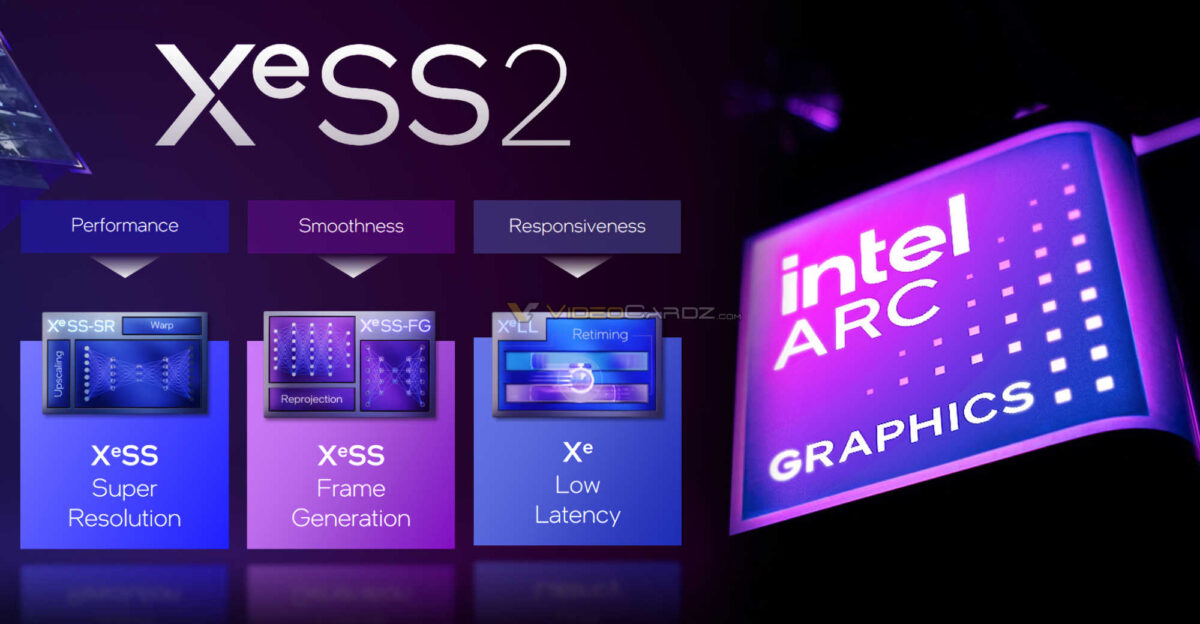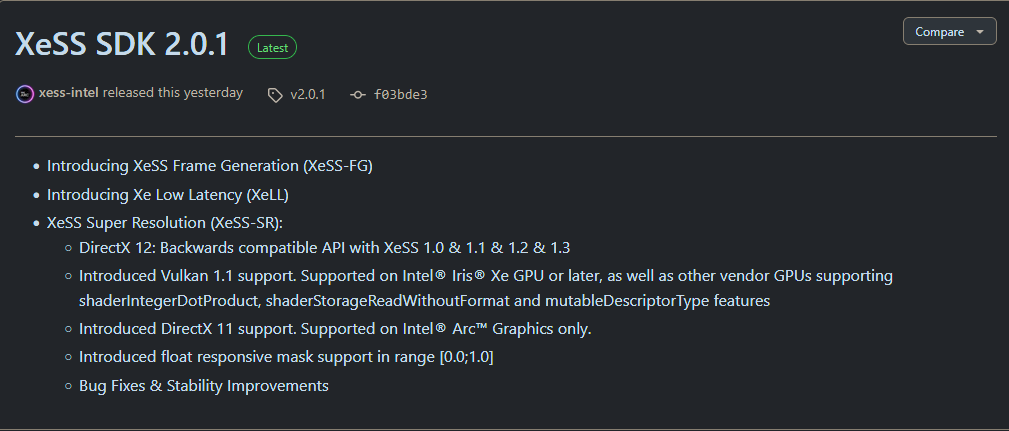Intel finallyreleasedthe SDK (Software Development Kit) for its XeSS 2.0 stack of technologies to the public through its GitHub repository yesterday. The XeSS SDK 2.0.1 offers a more streamlined and user-friendly process for developers to integrate Intel’s latest XeSS-SR, XeSS-FG, and XeLL technologies into their games. After a bit of research, we discovered that despite all these major updates, XeSS remains a closed-source and Windows-first technology.
Intel’s latest endeavors into the budget segment with theArc B580andB570in December came with a new suite ofupdatesto its XeSS stack. XeSS 2 is now subdivided into three main branches: XeSS-SR (Super Resolution), XeSS-FG (Frame Generation), and XeLL (Low Latency). XeSS-SR and FG target the respective upscaling and frame-generation tech found in Nvidia’s DLSS and AMD’s FSR offerings. Meanwhile, XeLL serves as Intel’s response to Reflex and Anti-Lag from Nvidia and AMD, respectively.

XeSS 2.0 (SR only) extends support towards olderDirectX11 titles, exclusively for systems with Arc graphics onboard (Iris Xe to Arc Battlemage). To further accelerate the integration of its technology, Intel is supplying pre-baked XeSS plugins for Unreal Engine and Unity, likely with engine-specific optimizations for faster development. The XeSS inspector tool used for debugging has also been updated for XeSS 2.0, adding API support to analyze XeSS-SR implementations inVulkanand DirectX 11 titles. Notably, the whitepaper detailing Intel’s XeSS 2.0 suite is also nowavailable.
With the patch notes out of the way, it’s important to mention that XeSS has still not gone open-source asIntel promised. The release section only contains pre-compiled binaries for Windows. A closer look at the licensing agreement also explicitly states: “No reverse engineering, decompilation, or disassembly of the Software is permitted.” The license mentions that Intel grants no rights to its intellectual property, which means that the modification of the source code is prohibited. Not that Intel is offering the source code in the first place.

Giving Intel the benefit of the doubt, this may mean that XeSS is not considered sufficiently mature for an open-source release. On the contrary, the open-source nature of FSR allows it to be cross-platform, simplifies developer integration, allows fine-tuning, and also opens room for community contributions such as mods that can enable FSR 3 in most games.
As it stands, XeSS is still a proprietary technology, so developers will be restricted to its binary releases, with limited compatibility on Linux. Even now, only ahandful of gamessupport XeSS 2.0 which is a shame, given the impressive features it brings and that early Battlemage adopters likely took into consideration at the time of purchase.

Get Tom’s Hardware’s best news and in-depth reviews, straight to your inbox.
Hassam Nasir is a die-hard hardware enthusiast with years of experience as a tech editor and writer, focusing on detailed CPU comparisons and general hardware news. When he’s not working, you’ll find him bending tubes for his ever-evolving custom water-loop gaming rig or benchmarking the latest CPUs and GPUs just for fun.